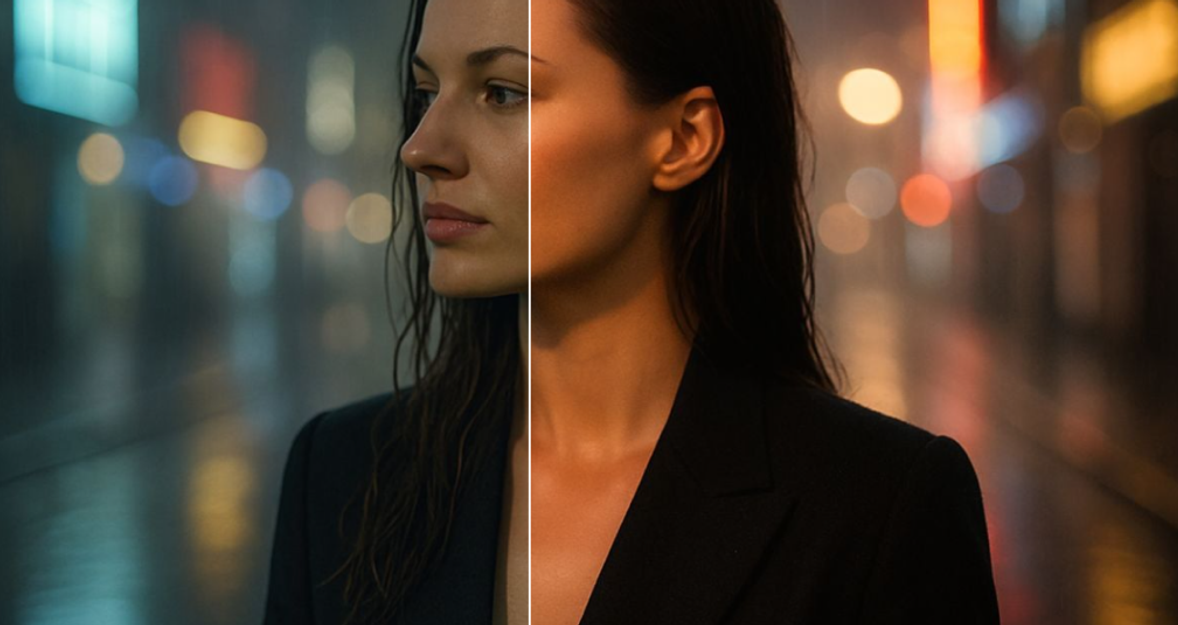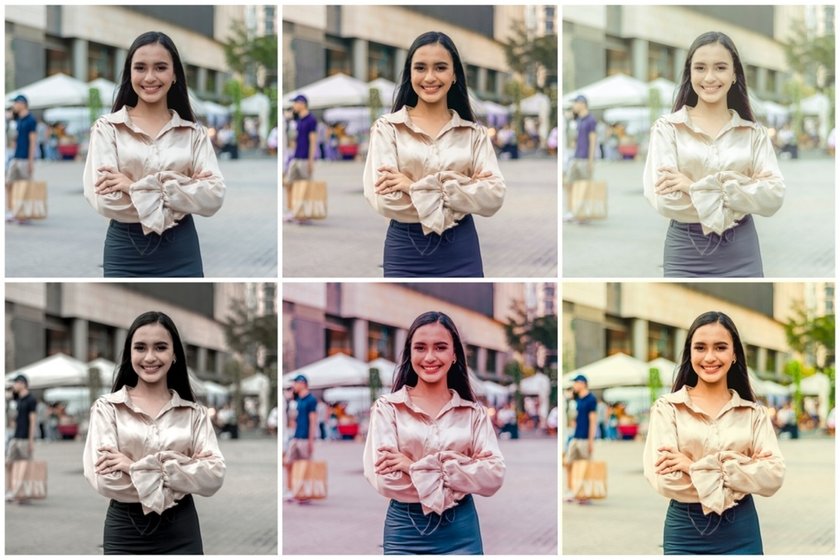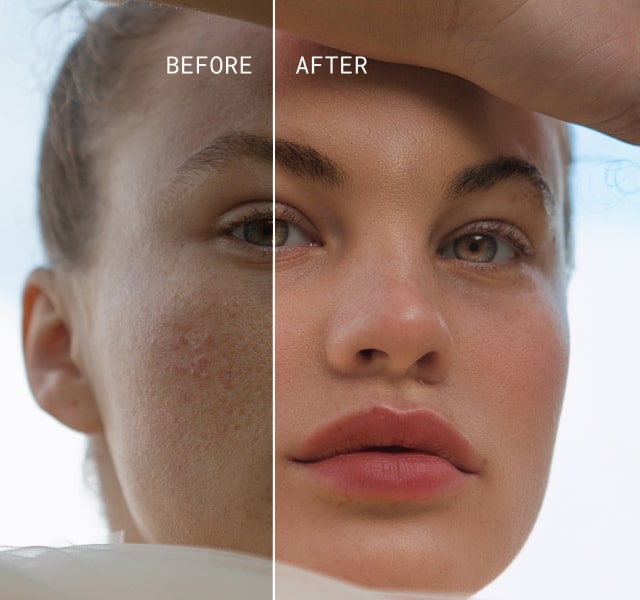Using Presets For Consistent Portrait Editing
October 10, 2025

A consistent editing style makes a portfolio feel professional. Presets speed up work and keep colors steady across shoots. They let you repeat a look without opening dozens of sliders.
Here you’ll learn what editing templates are, when to use them, and how to apply them without losing control. Saved settings also cut decision fatigue, so more time goes to lighting and posing. The tips below will help pick and tweak these adjustments to keep portraits natural and consistent.
What Are Presets?
Presets are saved sets of editing adjustments. Think of them as recipes for color, contrast, and tone. Instead of manually tweaking exposure, temperature, and sharpening, a pre-configured style applies those changes with a single click. Using image presets enables faster achievement of a starting point that suits the shoot.
Presets vs LUTs
Presets and LUTs solve similar problems but work in different ways. A preset applies a set of adjustments inside an editor. A LUT maps colors mathematically and is often used in video workflows. LUTs can also be used in photo editors, but they act less like a flexible recipe and more like a rigid color transformation. For portraits, editing profiles often includes portrait-specific tweaks such as soft clarity and skin tone corrections.
LUTs are powerful for quickly establishing a cinematic color grade, and they pair well with presets for final stylizing. If an LUT is used, test it on a handful of images first to avoid unexpected skin shifts. For ready-made options, some photographers combine presets with curated image LUTs to get unique looks.
AI Editing at the Speed of Inspiration
Try Aperty NowWhy Use Presets?
Speed and consistency are the main reasons for using editing presets. When shooting a series of family sessions, a wedding, or a brand shoot, these tools help every image follow the same visual language. That makes it easier for clients to recognize a signature style. Adjustment sets also reduce decision fatigue.
With a reliable starting point, it’s easier to spend time on meaningful refinements. They bring a polished look to portraits without hours of repetitive adjustments. Finally, pre-made edits teach. Studying the changes they make shows which sliders matter for certain effects, turning them into learning tools and time-savers.
Choosing the Right Presets: Top 5 Tips
 Picking presets is not just about style. It’s about match and flexibility.
Picking presets is not just about style. It’s about match and flexibility.
1. Match Presets to Your Gear and Lighting
A preset built for bright outdoor light will behave differently on studio-lit skin. Choose editing templates that were designed with similar cameras and lighting in mind. If using older adjustment sets, test them on current files. Cameras evolve, and what worked on one sensor might not translate perfectly to another.
2. Look for Skin-Respecting Presets
The best portrait presets preserve skin texture and complexion. Never adjust sets that are over-soft or squeeze skin into unnatural colors. Good portrait adjustments are gentle sharpness or texture changes, not total blurs. To evaluate a set, examine the before-and-after portraits to see how the skin interacts.
3. Try Before You Buy
Many creators offer sample packs or single preset demos. Test a small set across five images: one highlight-heavy, one shadowy, one warm-light, one cool-light, and one mixed. That shows whether the filter adapts well. Also, check how easily the adjustment can be fine-tuned after application.
4. Consider File Format and Bit Depth
Presets can behave differently on RAW and JPEG files. RAW holds more data and tolerates stronger adjustments. If you shoot RAW, choose presets tuned for that format. This prevents banding and odd color shifts later.
5. Check Compatibility with Your Workflow
Make sure the settings for your editor or on-phone use function. Some are for the Lightroom desktop or phone alone. Be sure they sync with DAM or with batch processing. To fit the workflow, avoids tedious conversions.
How to Use Presets as a Pro
A preset is a tool, not the final product. Applying it correctly makes the difference between a polished image and a generic one.
Step 1: Prep Your Files First
Start with good exposure and white balance. Editing templates expect sensible inputs. A template may behave unpredictably if an image is wildly underexposed or the white balance is off. Correct the basics first: exposure, contrast, and a neutral white balance. Also, cull before applying your chosen look. Work only on images that will be kept.
Step 2: Crop and Compose Intentionally
Before heavy color work, finish framing. Cropping changes how the eye sees contrast and subject prominence. Learn rules like leaving breathing room and avoiding distracting edges. If unsure, review a short guide on how to crop portraits for professional balance and composition.
Step 3: Fine-Tune, Don’t Overwrite
After applying a preset, make small, deliberate tweaks. Adjust exposure, lift shadows, or nudge the temperature to suit skin. Pay special attention to highlights on faces and catchlights in eyes. Use local adjustments sparingly: a subtle dodge on the face or a micro-clarity boost on the eyes can elevate the portrait without breaking the mood.
Step 4: Batch Smartly
When editing a session, apply a preset to a reference image that represents the majority of shots. Sync the adjustments to similar photos, then refine each one individually as needed. Avoid blindly copying the same settings across every frame. Lighting and subject distance change throughout a session, so a quick pass of personal tweaks helps prevent mistakes from stacking up.
Step 5: Save Custom Variations
Suppose you tweak a preset often and save that version. Small saved variants cut future work and keep your look consistent. Name them clearly, include camera or lighting notes if it helps (for example, “Studio-Soft_85mm”). That way, you can reuse what works without rebuilding the same edits.
Less Time Editing, More Time Creating
Try Aperty NowAvoiding Common Pitfalls
 Presets speed work, until they become a shortcut that hides mistakes. Here are common traps and how to avoid them.
Presets speed work, until they become a shortcut that hides mistakes. Here are common traps and how to avoid them.
Over-Reliance on One Look
Relying on a single preset for everything makes a portfolio predictable. Variety is part of professionalism. Switch between a few complementary filters or looks. Apply one for warm editorial portraits, another for neutral natural tones, and a third for moody or cinematic styles. This keeps your edits consistent while still matching each subject and setting.
One-Size-Fits-All Mentality
A preset is a starting point, not a universal cure. Using the same adjustment pack on different lighting can lead to poor results. If a style doesn’t look right, pause and pick a closer match or reset and tweak manually. Keep in mind that adjusting a few sliders is quicker than forcing a look that wasn’t meant for the shot.
Ignoring Skin Tones
Skin tone shifts are the quickest giveaway of heavy-handed editing. If skin looks too orange, green, or flat, correct it immediately. Use HSL (Hue, Saturation, Luminance) or local color tools to return skin to natural ranges. When in doubt, compare with an unedited raw preview. Natural skin tones build trust in a photographer’s work.
Blind Batch Processing
Applying presets to hundreds of images without checking a sample is risky. Mass sync can ruin a single unusual frame, a backlit silhouette, or a frame with mixed light sources. Spot-check representative images before committing to a full sync, and fix outliers individually.
Forgetting the Client’s Style
Not every client is after the same style. A preset that looks perfect for a fashion shoot might feel out of place in a family session. Take a moment to ask what vibe they prefer before you start editing. If someone wants light, airy portraits, don’t push a dark, moody filter on them. Adjusting presets to match each client’s taste shows flexibility, which keeps clients returning.
Wrap-Up
Presets are powerful when used with care. They save time, build a consistent style, and teach good editing habits. But they’re tools, not a substitute for thoughtful work. A solid workflow: prepare your files, choose a preset that fits the shoot, apply it to a reference image, then refine each photo for skin tones and exposure. Rotate presets and avoid blanket batch edits. Used this way, presets speed you up without sacrificing quality.


-2717.png?q=85&w=840)
